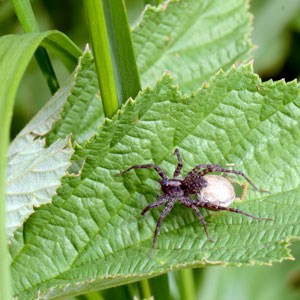Contact
mattias.jonsson@slu.se, 018 - 67 2450

A more complex ecosystem is usually inhabited by a more diverse set of species. In a new study, it was found that complex ecosystems can induce rapid behavioral responses even before changes in diversity is shown. This can potentially promote the stability of ecosystem functions.
The habitat heterogeneity hypothesis predicts that complex ecosystems will be inhabited by a more diverse set of species than simple ones. Having an increased habitat heterogeneity can affect the functioning of communities. However, this is not well understood as species and individuals may respond differently to a changing environment.
In a new study, Mattias Jonsson (Centre for Biological Control and the Department of Ecology at SLU) and Gerard Masher (Department of Ecology at SLU) has with colleagues from the University of Innsbruck in Austria and Brandenburg University of Technology in Germany investigated this matter.
A DNA-based approach was used to examine how predatory beetles and spiders change their feeding behavior in response to changes in habitat heterogeneity in cereal fields. The experiment was conducted in spring barley fields in Southern Sweden where habitat heterogeneity was manipulated by increasing within-field plant diversity.
With a wider range of plants, such as weeds, the habitat becomes more complex. When this happens, both prey and predators may find shelter easier. Consequently, predators no longer have to fear encountering each other as much as in a simpler setting. At the same time, they are forced to explore their habitat more in search of food.
– We found that not only does the feeding behavior of predators change quickly after plant
diversity is increased, this actually occurs before any differences are seen in predator richness, says Mattias Jonsson.
It appears that in more complex habitats spatial separation resulted in relaxed competition and allowed an increased overlap in resources used among predator species. Predators collected from heterogenous habitats also showed greater individual-level dietary variability which might be due to relaxed intraspecific competition.
– Our results have implications for agriculture, where increasing habitat heterogeneity could be used to make pest control more reliable by allowing a greater number of predator species to contribute to this service. Habitat heterogeneity induces rapid changes in the feeding behaviour of generalist arthropod predators, says Mattias.
mattias.jonsson@slu.se, 018 - 67 2450
Read the whole study here: http://onlinelibrary.wiley.com/doi/10.1111/1365-2435.13028/abstract